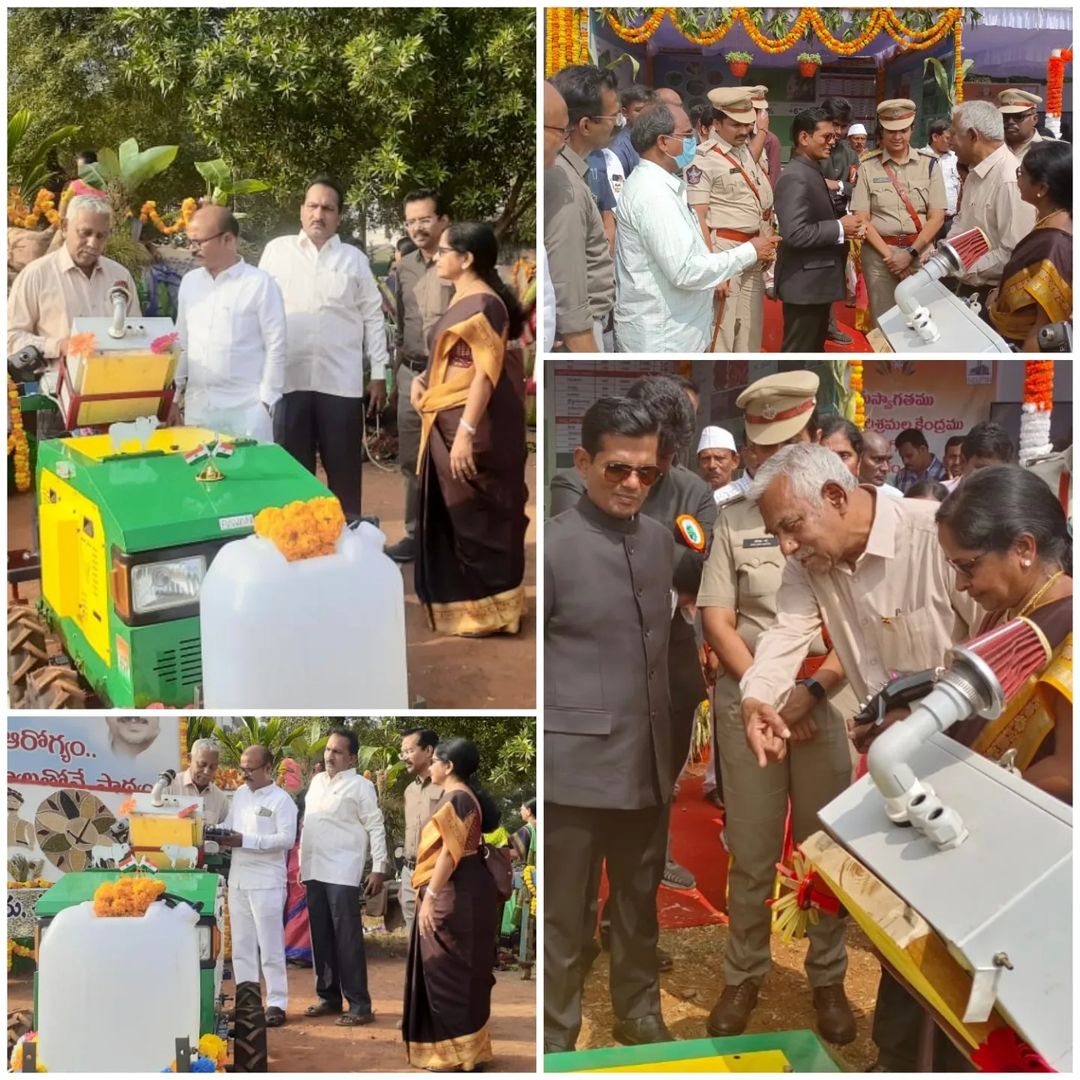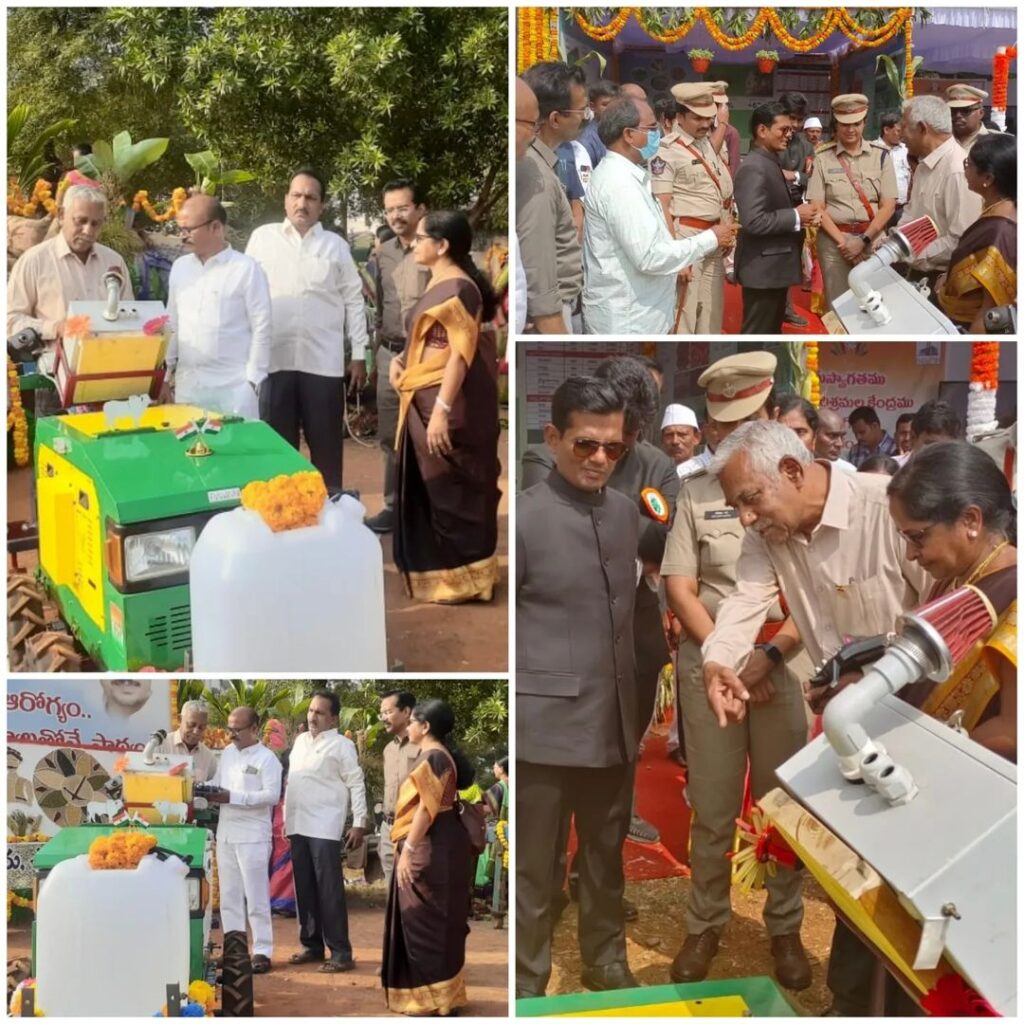
Revolutionizing Agriculture: Viswamatha Farms’ Autonomous Farming Robot
In the ever-evolving world of agriculture, innovation is the key to sustainability and efficiency. At Farmonaut, we’re always excited to see new technologies that push the boundaries of traditional farming methods. Today, we’re thrilled to share news about a groundbreaking development in the agricultural sector that aligns perfectly with our mission to make precision agriculture accessible and affordable.
The Dawn of Autonomous Farming
Viswamatha Farms has recently unveiled an autonomous and remote-controlled farming robot designed to assist in various farming activities throughout the crop cycle. This revolutionary technology is set to transform the way we approach agriculture, boosting efficiency and productivity in ways we’ve only dreamed of until now.
As pioneers in satellite-based farm management solutions, we at Farmonaut understand the immense potential of autonomous technology in agriculture. The introduction of this farming robot by Viswamatha Farms represents a significant leap forward in agriculture innovation, complementing our own efforts to integrate cutting-edge technology into farming practices.
Features of the Autonomous Farming Robot
While specific details about the robot’s capabilities are still emerging, we can speculate on some of the features that make this technology so promising:
- Autonomous Operation: The robot can navigate fields independently, reducing the need for constant human supervision.
- Remote Control: Farmers can take manual control when needed, offering flexibility in operations.
- Multi-task Functionality: Likely capable of performing various tasks such as planting, weeding, and harvesting.
- Precision Agriculture: Utilizes advanced sensors and GPS for accurate field navigation and task execution.
- Data Collection: Potentially equipped with sensors to gather valuable data on crop health, soil conditions, and more.
The Synergy with Satellite-Based Solutions
At Farmonaut, we’re particularly intrigued by how this autonomous robot could complement our satellite-based farm management solutions. Our platform, which leverages multispectral satellite imagery for crop health monitoring, could potentially integrate data collected by these ground-based robots to provide even more comprehensive insights to farmers.
For instance, while our satellite imagery provides a broad overview of crop health using metrics like NDVI (Normalized Difference Vegetation Index), the remote controlled robot could offer ground-level verification and more detailed data collection. This combination of aerial and ground-based data could revolutionize precision agriculture practices.
The Importance of NDVI in Agriculture
Speaking of NDVI, it’s worth highlighting the use of NDVI in agriculture, as it’s a crucial tool in both satellite-based solutions like ours and potentially in ground-based robots like the one developed by Viswamatha Farms.
NDVI (Normalized Difference Vegetation Index) is a simple graphical indicator that can be used to analyze remote sensing measurements, typically from satellite imagery, to assess whether the observed target contains live green vegetation or not. In agriculture, NDVI is used to:
- Monitor crop health and growth
- Detect drought stress
- Predict crop yields
- Identify areas that may require additional irrigation or fertilization
Our Farmonaut platform utilizes NDVI data from satellite imagery to provide farmers with valuable insights into their crop health. The integration of ground-based NDVI measurements from autonomous robots could provide an even more detailed and accurate picture of crop conditions.
Potential Impact on Efficient Wheat Farming
While the Viswamatha Farms robot is likely designed for multiple crop types, let’s consider its potential impact on wheat farming as an example. An efficient wheat farm utilizing this technology could see significant improvements in several areas:
- Precision Planting: The robot could ensure optimal seed spacing and depth, maximizing field utilization.
- Targeted Fertilization: By integrating data from soil sensors and satellite imagery, the robot could apply fertilizer only where needed, reducing waste and environmental impact.
- Weed Management: Autonomous weed detection and removal could significantly reduce herbicide use and labor costs.
- Harvest Optimization: The robot could potentially assess crop readiness and perform selective harvesting, ensuring optimal grain quality.
- Data-Driven Decision Making: Continuous monitoring and data collection by the robot could provide farmers with unprecedented insights for better decision-making.
Comparing Farm Monitoring Technologies
As we consider the introduction of autonomous robots in farming, it’s worth comparing different farm monitoring technologies. Here’s how our Farmonaut Satellite System stacks up against drone and IoT-based solutions:
| Feature | Farmonaut Satellite System | Drone-based Monitoring | IoT-based Monitoring |
|---|---|---|---|
| Coverage Area | Large (entire farms at once) | Medium (limited by flight time) | Small (depends on sensor placement) |
| Frequency of Data | Regular (based on satellite pass) | On-demand (requires manual flights) | Continuous |
| Initial Setup Cost | Low | High (drone purchase) | Medium to High (sensors and network) |
| Operational Complexity | Low (automated) | High (requires trained pilot) | Medium (maintenance required) |
| Weather Dependency | Low (can see through clouds) | High (affected by wind, rain) | Low |
| Data Processing | Automated (AI-driven) | Often manual or semi-automated | Automated |
| Scalability | High (easily cover more area) | Medium | Low to Medium |
While each technology has its strengths, the Farmonaut Satellite System offers a unique combination of wide coverage, low operational complexity, and high scalability that makes it an excellent choice for many farmers.
The Future of Farming: Integrating Multiple Technologies
The introduction of autonomous farming robots like the one developed by Viswamatha Farms represents an exciting step forward in agricultural technology. However, we at Farmonaut believe that the future of farming lies in the integration of multiple technologies, each bringing its unique strengths to the table.
Imagine a farm where:
- Satellite imagery provides broad, regular overviews of crop health and field conditions
- Autonomous robots perform precise, ground-level tasks and collect detailed data
- IoT sensors continuously monitor soil moisture, temperature, and other critical factors
- AI systems analyze data from all these sources to provide actionable insights and predictions
This multi-layered approach to farm management could revolutionize agriculture, dramatically improving efficiency, sustainability, and productivity.
How Farmonaut Complements Autonomous Farming Technologies
At Farmonaut, we’re excited about the potential synergies between our satellite-based solutions and emerging technologies like autonomous farming robots. Here’s how our platform could complement and enhance the capabilities of these ground-based systems:
- Broad Overview for Targeted Action: Our satellite imagery can identify areas of concern across large farms, directing autonomous robots to specific locations for closer inspection or targeted interventions.
- Data Integration: The Farmonaut platform could potentially integrate data collected by ground-based robots, providing farmers with a more comprehensive view of their farm’s health and productivity.
- AI-Powered Insights: Our Jeevn AI Advisory System could incorporate data from multiple sources, including autonomous robots, to provide even more accurate and tailored advice to farmers.
- Resource Optimization: By combining satellite data with ground-level information from robots, we can help farmers optimize their use of water, fertilizers, and other resources more effectively than ever before.
- Predictive Analytics: The combination of satellite data and ground-based observations could enhance our ability to predict crop yields, pest outbreaks, and other critical factors affecting farm management.
Getting Started with Farmonaut
While we eagerly await more details about Viswamatha Farms’ autonomous farming robot, farmers can already start benefiting from advanced agricultural technology through Farmonaut’s satellite-based solutions. Here’s how you can get started:
- Download our mobile app: Android | iOS
- Explore our web application: Farmonaut Web App
- For developers interested in integrating our data into their own systems, check out our API and API documentation
Subscription Options
Ready to take your farming to the next level with Farmonaut? Check out our subscription options below:
Conclusion
The introduction of autonomous farming robots by companies like Viswamatha Farms marks an exciting new chapter in agricultural innovation. At Farmonaut, we’re thrilled to be part of this technological revolution, offering complementary satellite-based solutions that can work hand-in-hand with these ground-based technologies.
As we move forward, the integration of multiple advanced technologies – from satellite imagery and AI to autonomous robots and IoT sensors – promises to create a new paradigm in farming. This multi-faceted approach has the potential to dramatically improve efficiency, sustainability, and productivity in agriculture, helping to meet the growing global demand for food while minimizing environmental impact.
We encourage farmers, agronomists, and agricultural enthusiasts to stay informed about these exciting developments and to consider how technologies like Farmonaut’s satellite-based solutions can benefit their operations today. The future of farming is here, and it’s more technologically advanced, data-driven, and efficient than ever before.
FAQs
-
Q: How does Farmonaut’s satellite technology differ from the autonomous robot technology?
A: Farmonaut uses satellite imagery to provide broad, regular overviews of entire farms, while autonomous robots operate on the ground, performing specific tasks and collecting detailed, localized data. -
Q: Can Farmonaut’s technology be used alongside autonomous farming robots?
A: Absolutely! Farmonaut’s satellite-based solutions can complement ground-based robots by providing broader context and directing robots to areas that need attention. -
Q: What is NDVI and why is it important in agriculture?
A: NDVI (Normalized Difference Vegetation Index) is a measure of plant health derived from satellite imagery. It’s crucial for monitoring crop health, predicting yields, and identifying areas that may need attention. -
Q: How often does Farmonaut update its satellite imagery?
A: The frequency of updates depends on the subscription plan, but we typically offer updates every 3-5 days for most areas. -
Q: Is Farmonaut’s technology suitable for small farms?
A: Yes! Farmonaut is designed to be accessible and affordable for farms of all sizes, from small family farms to large agricultural operations. -
Q: How can I integrate Farmonaut’s data with my existing farm management systems?
A: Farmonaut offers an API that allows developers to integrate our data into other systems. Check out our API documentation for more details. -
Q: Does Farmonaut offer any mobile apps?
A: Yes, we have mobile apps available for both Android and iOS devices, allowing you to access farm data on the go. -
Q: How does Farmonaut’s technology contribute to sustainable farming?
A: By providing precise data on crop health and field conditions, Farmonaut helps farmers optimize their use of water, fertilizers, and other resources, reducing waste and environmental impact. -
Q: Can Farmonaut’s technology help with crop insurance claims?
A: Yes, our satellite imagery can provide objective evidence of crop conditions, which can be valuable for insurance claims related to crop damage or loss. -
Q: How does Farmonaut ensure the security and privacy of farm data?
A: We take data security very seriously, employing robust encryption and security measures to protect all user data. Our privacy policy ensures that your farm data remains yours and is never shared without your explicit permission.
As we continue to witness remarkable advancements in agricultural technology, from autonomous robots to satellite-based monitoring systems, the future of farming looks brighter than ever. At Farmonaut, we’re committed to being at the forefront of this agricultural revolution, providing farmers with the tools and insights they need to thrive in an increasingly complex and challenging world.

Whether you’re a small family farmer or managing a large agricultural operation, we invite you to explore how Farmonaut’s technology can help you optimize your farming practices, increase yields, and contribute to a more sustainable future for agriculture. Together, we can cultivate a new era of smart, efficient, and environmentally friendly farming.
